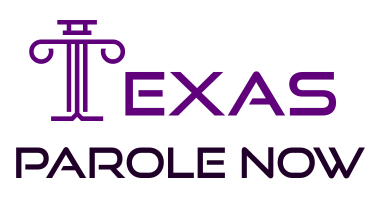“Imagine designing a public policy that spends billions, swells dockets and jails, yet still can’t deliver safer drugs or safer streets.” That’s the challenge James Ostrowski posed in his 1990 Hofstra Law Review article, and it’s still our challenge today. This guide distills his dual-pronged thesis—moral (self-ownership) and practical (cost–benefit)—and updates it for current law and evidence. Our goal is simple: equip law students, practitioners, and policymakers to evaluate reforms that advance drug policy reform, criminal justice reform, and harm reduction, without sacrificing public safety. For reference, the original article appears in the Hofstra Law Review.
Background: Why This 1990 Argument Still Resonates
Ostrowski wrote amid peak “war on drugs” fervor, where enforcement was the primary tool. He advanced two claims:
- Moral: Adults own their bodies; consensual, nonviolent conduct shouldn’t trigger force.
- Practical: Prohibition’s costs (fiscal, social, constitutional) exceed its benefits.
Those claims remain timely. National drug control spending is still massive, and overdose dynamics have shifted to synthetics, raising new questions about whether prohibition reduces harm.
The Policy Moment: From the “War on Drugs” to 2025
Today’s landscape is mixed. Some jurisdictions decriminalized possession; others reversed course. Oregon’s HB 4002 (2024) partially recriminalized possession while adding treatment pathways, signaling an iterative policy era rather than a one-way march. At the federal level, DEA has proposed moving cannabis to Schedule III but has not finalized the rule as of this writing.
The Moral Case: Self-Ownership and Individual Liberty
Ostrowski’s first pillar is self-ownership: each person has the primary right to control their body and private, consensual choices. If the state may use force at all, it should be confined to preventing non-consensual harm (e.g., violence, fraud) or managing clear third-party risks (e.g., impaired driving). Criminalizing private drug use among consenting adults, in this view, oversteps that boundary. Ostrowski frames prohibition as the initiation of force against nonviolent conduct; legalization removes that force while preserving sanctions for harms to others.
What “Self-Ownership” Means in Law and Philosophy
Think of it as a baseline rule for bodily autonomy. In liberal theory (from Locke to Mill), government legitimacy turns on protecting, not overriding, self-directed choices—unless those choices directly risk others. Ostrowski’s distinctive move is to treat adult drug consumption like other risky but permitted behaviors (alcohol, skydiving): regulate the externalities, not the person.
Limits of State Coercion
Where does coercion remain justified? Where third-party harms are concrete and proximate—drug-impaired driving, distribution to minors, fraud in labeling, or diversion. A legalization model guided by self-ownership would target conduct (e.g., DUI, sales to minors) and mandate safety (testing, labeling), rather than prohibit possession or use per se.
Read Also: 5 Tenant Disputes & How Justin Billingsley Greene Law Helps
The Practical Case: Cost–Benefit Analysis of Prohibition
The second pillar is empirical: Do we get measurable safety and health benefits proportionate to the costs? Here’s a simplified ledger.
Enforcement Costs vs. Public Health Returns
- Spending: ONDCP coordinates a national drug control budget on the order of $44 billion across 19 agencies—policing, interdiction, treatment, prevention, analytics. Yet overdose and supply pressures persist, raising ROI questions.
- System Burdens: At the federal level, drug offenses remain among the categories with the highest prosecution rates. Cases move quickly but still pull resources from courts and defense systems.
- Jails & Prisons: While jail populations have fluctuated, drug enforcement contributes to churn, particularly in border districts and urban centers. Tracking exact causality is complex, but BJS reports offer a window into the scale and composition of cases.
Black Market Dynamics and Crime
Prohibition drives trade underground, where disputes are settled by violence and products lack quality control. That means adulteration (e.g., fentanyl contamination), inconsistent potency, and incentives for organized crime. A regulated market can align incentives toward testing, age gating, and traceability—aiming to reduce collateral crime and uncertainty. Ostrowski anticipated these dynamics in 1990; today’s synthetic era heightens them.
Public Safety and Overdose Trends
The overdose crisis is real—but policy should track what actually works. CDC provisional data show a sharp national decline in overdose deaths in 2024–2025, suggesting that targeted interventions (e.g., supply disruption for synthetics, expanded treatment, naloxone access) can move the needle. That said, overdose remains a serious public health threat, and local trends vary. Legalization debates should separate use prevalence from mortality drivers like contamination and lack of access to treatment.
Legal Landscape: Key Precedents and Evolving Statutes
Even a rights-based policy must fit within constitutional constraints and statutory frameworks.
Robinson v. California & Powell v. Texas
In Robinson (1962), the Supreme Court struck down a statute criminalizing the status of addiction—punishing a condition, not conduct, violates the Eighth Amendment. Powell (1968) later upheld a conviction for public intoxication, treating it as punishable conduct rather than status. Together, these cases suggest that the Constitution is more tolerant of regulating harmful acts than personal conditions—a distinction that supports decriminalization of status-like possession while maintaining sanctions for harmful behavior (e.g., impaired driving).
Recent Statutory Shifts (Oregon HB 4002; Federal Cannabis)
- Oregon (2024): After decriminalizing user-amount possession in 2020, Oregon enacted HB 4002 (effective 2024–2025) to recriminalize some possession while expanding deflection and treatment access. The episode underscores the importance of implementation and service capacity in reforms.
- Federal Cannabis: DEA proposed moving marijuana to Schedule III (2024), held and then postponed hearings in 2024–2025; as of September 8, 2025 (Asia/Karachi), no final rule has issued. Rescheduling would not equal full legalization; CSA controls would still apply.
Policy Design: Alternatives to Blanket Prohibition
Ostrowski’s thesis doesn’t demand laissez-faire. It argues for right-sized regulation that targets harms.
A Rights-Respecting Legalization Blueprint
- Licensing & Zoning: Limit outlets by distance from schools; require community engagement.
- Testing & Labeling: Mandatory potency, contaminant, and adulterant testing; batch traceability.
- Age Limits & ID: Strict verification; aggravated penalties for sales to minors.
- Taxation: Use specific (per-mg) taxes to avoid pushing users to unsafe illicit markets.
- Marketing Rules: Prohibit youth-targeted advertising; require risk disclosures.
- Impairment & Nuisance: Maintain strong DUI standards and public nuisance tools.
- Harm Reduction: Fund MOUD (for opioids), naloxone, syringe services, drug-checking.
- Data: Real-time surveillance of poisonings, overdoses, and diversion.
Criminal Justice Reform Linkages
- Record Relief: Automatic expungement for past possession offenses.
- Sentencing: Proportionality, eliminate mandatory minimums for low-level conduct.
- Reentry: Housing, employment certificates, occupational licensing relief.
- Equity: Direct licensing support to communities heavily impacted by drug prohibition costs.
Implementation Guide: From Bill Draft to Rollout
Here’s a step-by-step approach for policymakers:
- Define Objectives: Safety, civil liberties, reduced illicit trade, fiscal prudence.
- Map Baseline Data: Arrests, prosecutions, overdose, treatment capacity (use BJS/CDC baselines).
- Choose the Model: Decriminalization, medical-only, or full adult-use with controls.
- Draft Core Statute: Possession/use noncriminal; regulated production and sales; penalties for diversion and sales to minors.
- Stand-Up Agencies: Consolidate licensing, lab accreditation, and compliance auditing.
- Harm-Reduction Buildout: Scale MOUD, naloxone distribution, and drug-checking services.
- Public Safety Rules: DUI, public nuisance, and workplace policies.
- Equity & Economic Design: Fee relief, incubators, revenue earmarks for affected communities.
- Communications: Risk literacy campaigns; provider training.
- Measurement & Iteration: Publish quarterly KPIs; adjust taxes/rules to suppress the black market.
Data, Evaluation, and Course Correction
Adopt a dashboard: ER admissions for poisonings, overdose mortality, black-market price/purity trends, legal market compliance rates, and fairness metrics (stops, searches, prosecutions by demographic group). Use sunset clauses plus mandatory legislative review tied to these indicators.
Addressing Common Objections
- “Legalization will spike youth use.” Age-gated markets with strong ID checks and marketing limits can lower youth access relative to illicit markets.
- “Impairment will endanger roads.” Keep per se DUI laws and invest in officer training/drug recognition experts.
- “Addiction is an externality on families and workplaces.” Fund treatment on demand, protect workplaces via enforceable impairment policies, and use targeted civil tools rather than criminalizing private use.
- “Overdose will rise.” The fatality driver is often contamination and unpredictable potency; legalization with testing and drug-checking aims directly at those hazards. Recent CDC provisional data show significant declines in overdose deaths, highlighting the promise of focused health strategies.
Case Studies & Thought Experiments
- Composite Case: The Adulterant Problem
A patient misuses pressed pills; fentanyl contamination causes a near-fatal overdose. Under prohibition, quality is unregulated; under legalization, lab testing and lot recalls reduce severe events. - Hypothetical: Small-Town Retail Caps
A city of 30,000 considers three retail licenses, 1-mile school buffers, and per-mg THC tax. Pair with a 24/7 naloxone kiosk and a mobile MOUD clinic. Measure: ER admissions, youth survey data, illicit price/purity. - Equity Pilot
Automatic expungement of minor possession, plus micro-licenses and technical assistance for impacted residents; measure licensing diversity and neighborhood safety indicators.
FAQs
1) What exactly did Ostrowski argue?
He offered a two-part case: moral (self-ownership limits coercion against nonviolent drug use) and practical (prohibition’s costs outweigh its benefits compared with regulation).
2) Is this the same as laissez-faire?
No. A rights-grounded model still regulates: testing, age limits, DUI enforcement, and targeted sanctions for third-party harms.
3) What do recent numbers say about enforcement scale?
BJS data show drug offenses remain heavily prosecuted at the federal level, and national drug control budgeting remains large—raising questions about return on investment.
4) Has overdose finally turned a corner?
CDC provisional releases in 2024–2025 show a sizeable decline in predicted deaths. That doesn’t end the crisis, but it suggests health-first strategies are working in tandem with supply measures.
5) What legal constraints matter most?
Robinson limits punishment for status (addiction); Powell permits sanctioning conduct like public intoxication. Good policy avoids criminalizing mere possession/use and focuses on harmful acts.
6) Where do Oregon and federal cannabis policy fit?
Oregon’s HB 4002 shows that implementation capacity matters, and DEA’s Schedule III proposal (not yet finalized) illustrates incremental federal change without full legalization.
7) Does legalization guarantee less crime?
It aims to shift incentives: less black-market violence and contamination, more transparency. Outcomes depend on tax rates, enforcement fidelity, and legal supply competitiveness.
8) How should lawmakers start?
Use a pilot-and-measure approach (see implementation steps), publish KPIs quarterly, and hard-wire course correction into the statute.
Conclusion
James Ostrowski the Moral and Practical Case for Drug Legalization gives us a durable compass: respect self-ownership and demand evidence for every dollar and arrest. Today’s data-rich environment makes it possible to regulate for safety, protect civil liberties, and reduce black market crime. The path forward isn’t ideology; it’s design + measurement. If you’re drafting or evaluating reform, coordinate with public health, courts, and law enforcement to build a model that can be tested—and improved—fast.
You May Also Like: Indiana Buffer Zone Law Injunction

